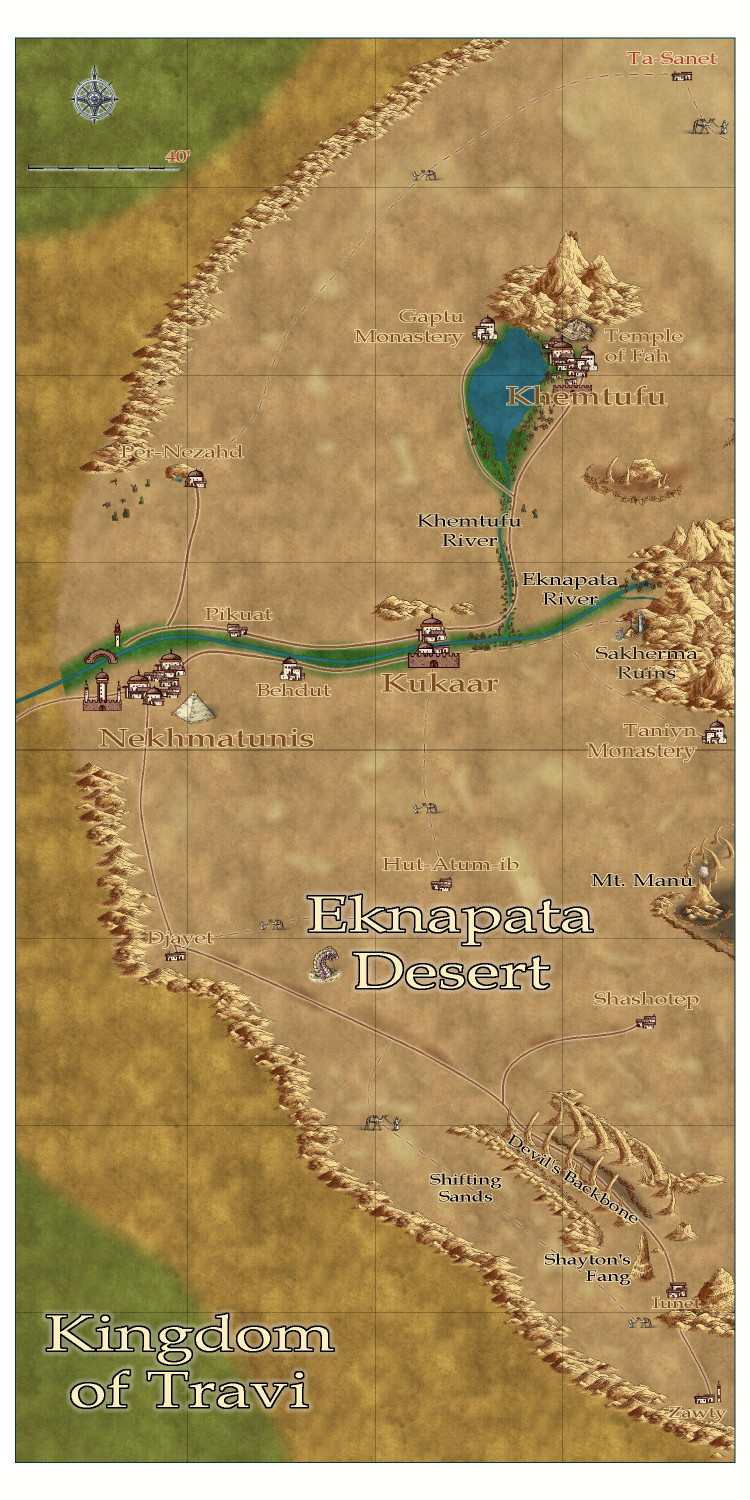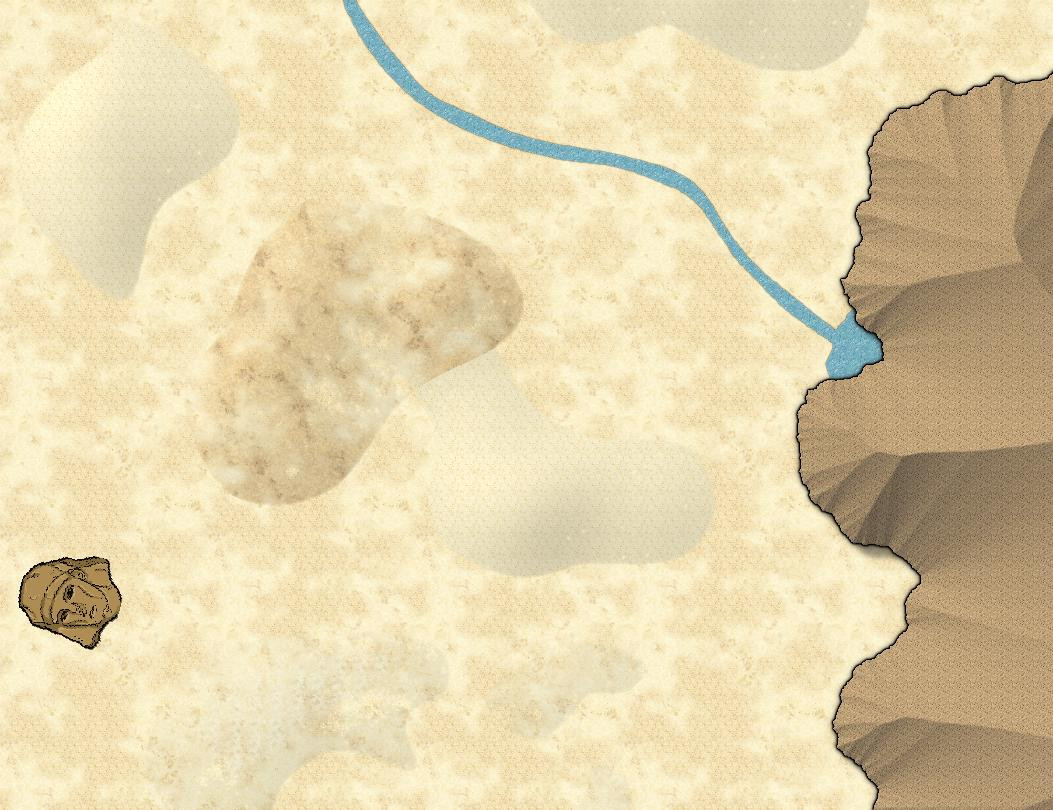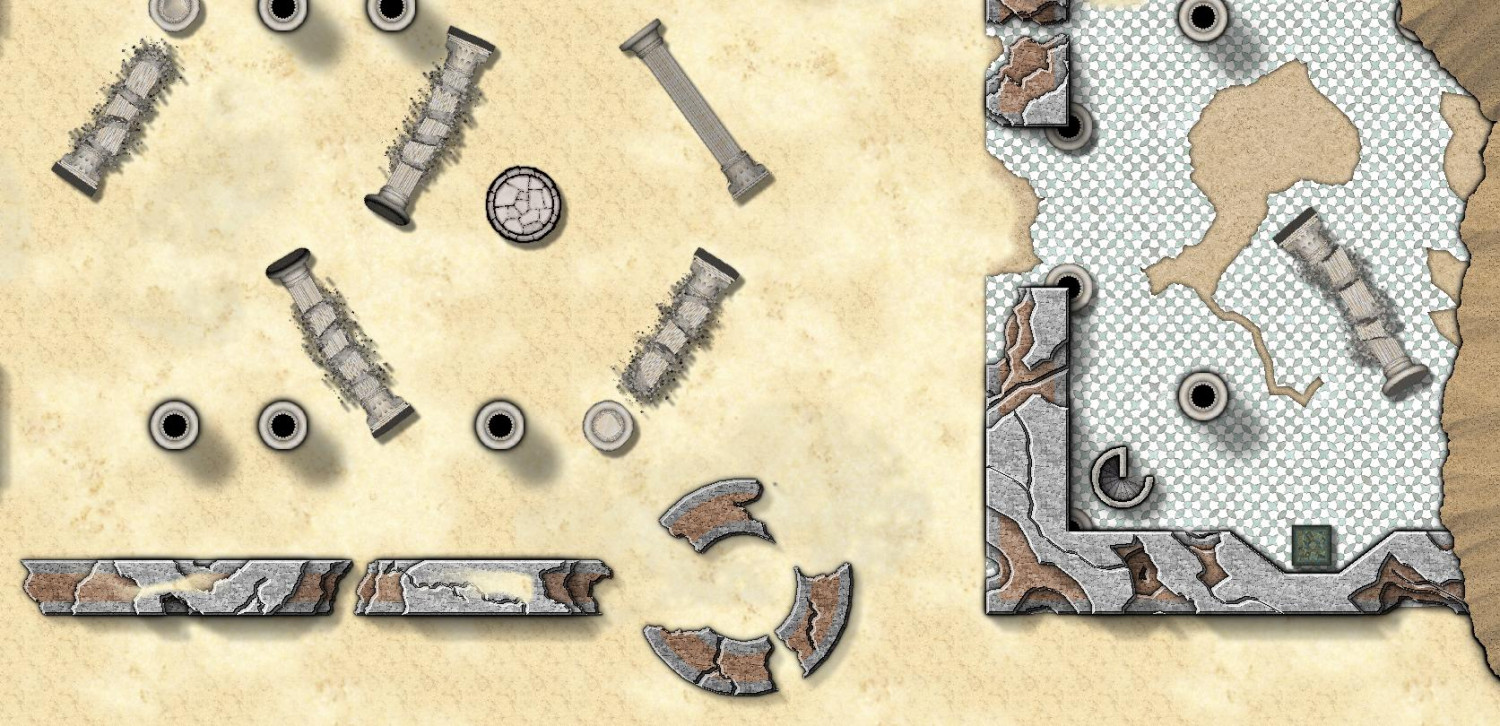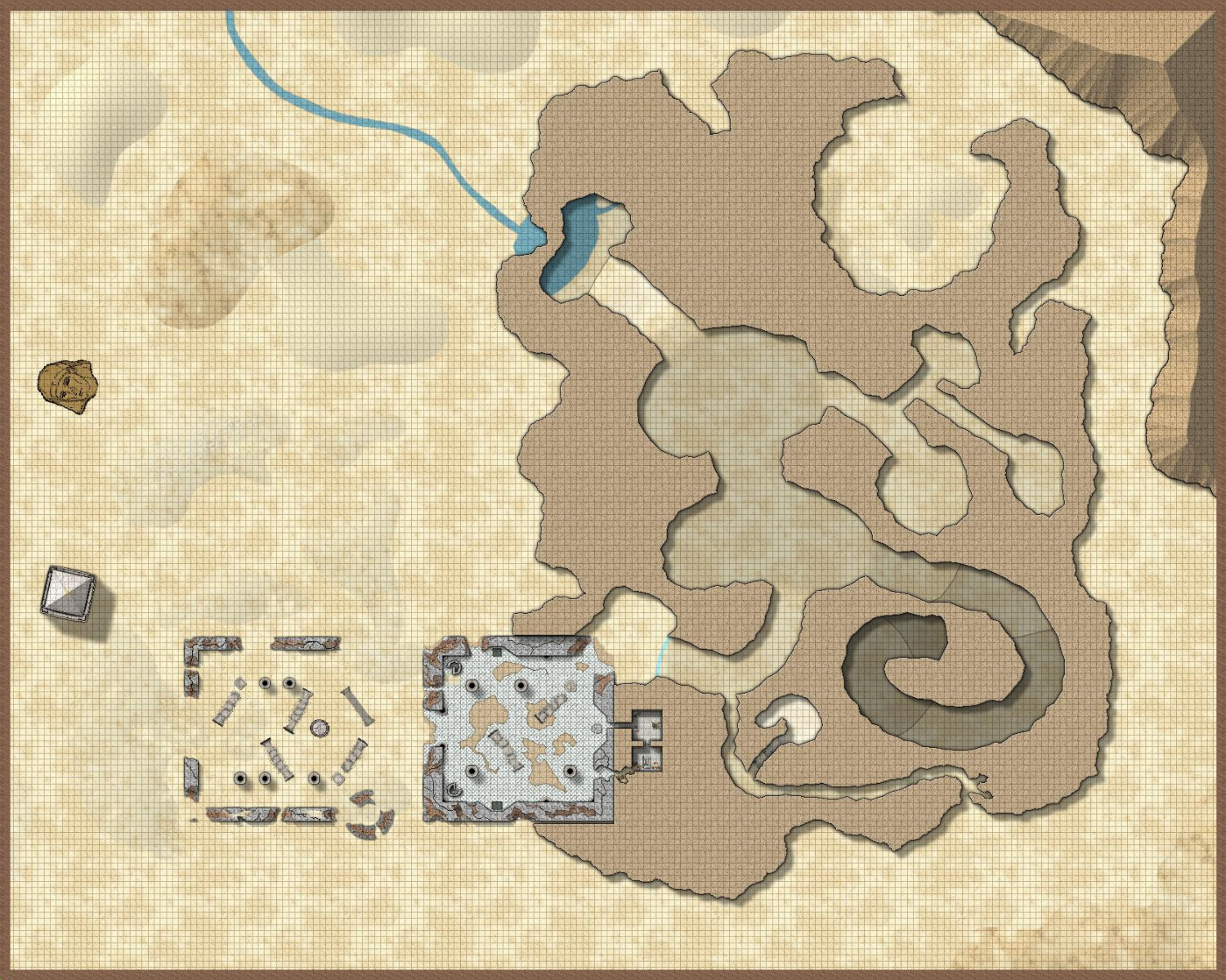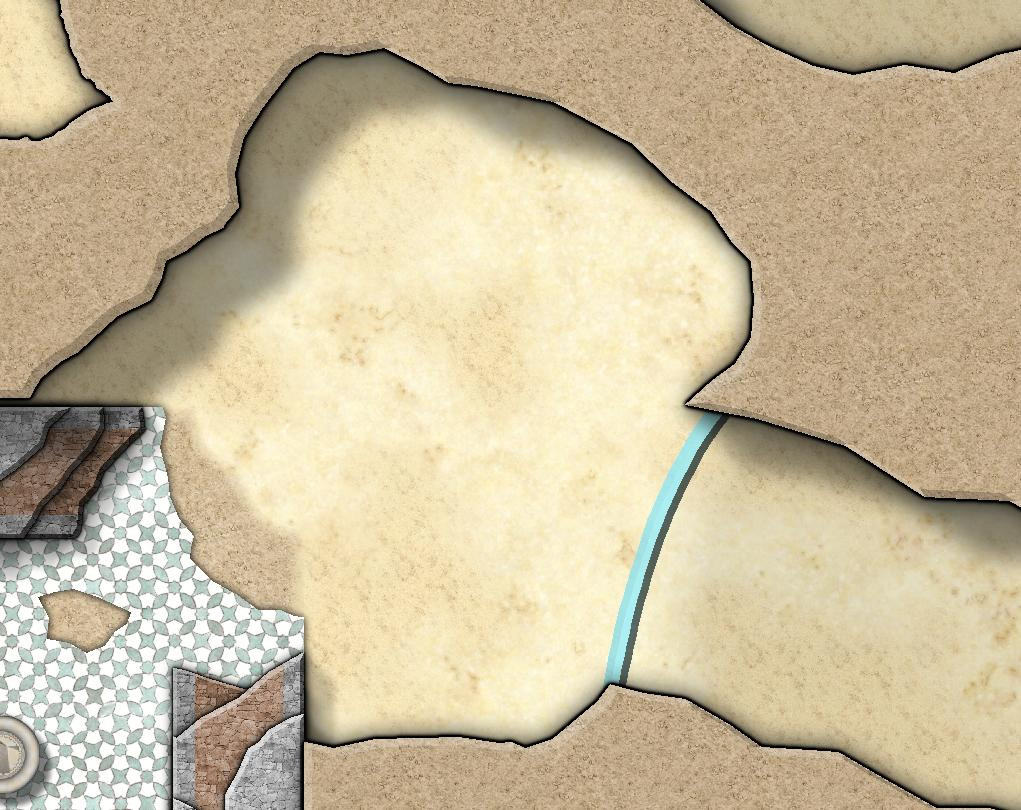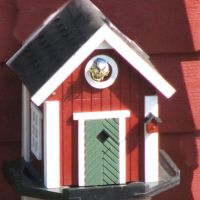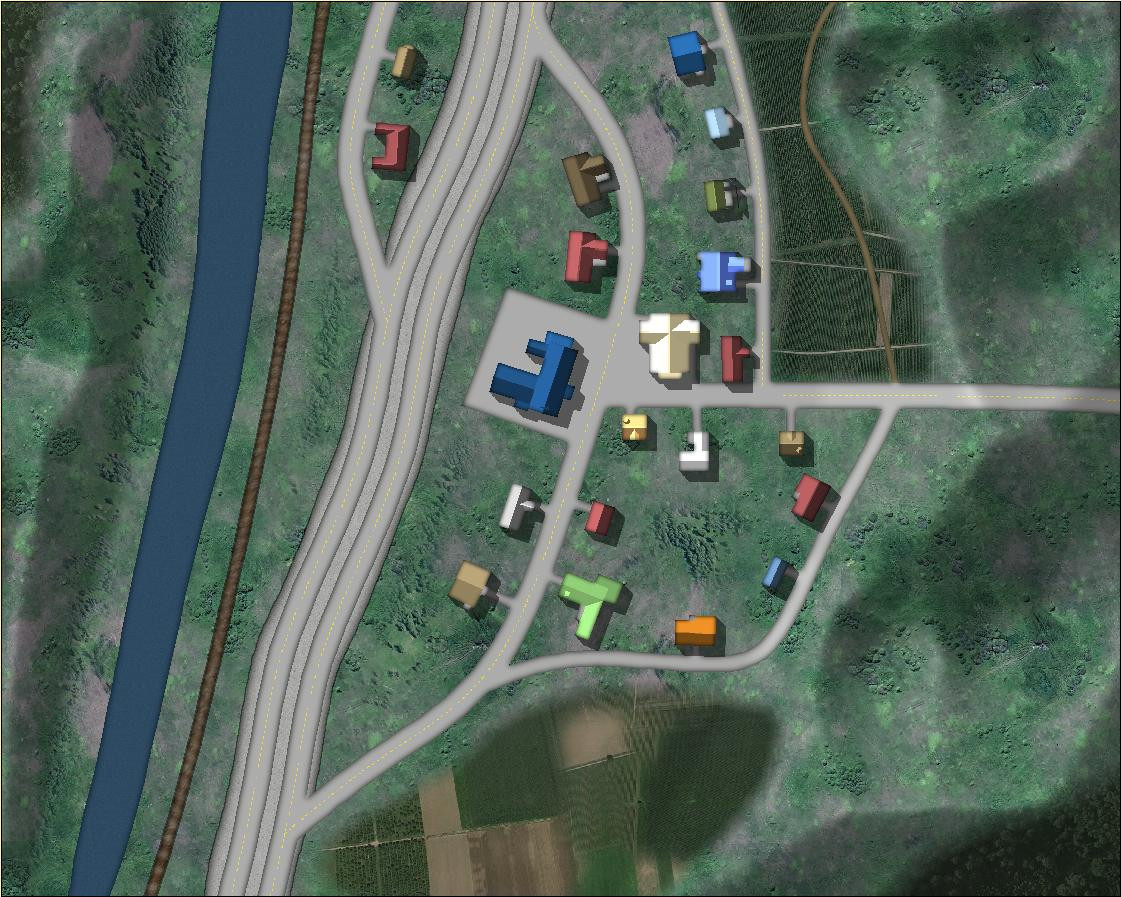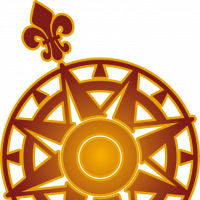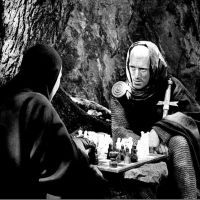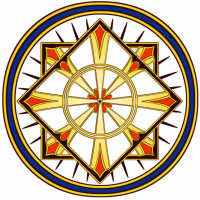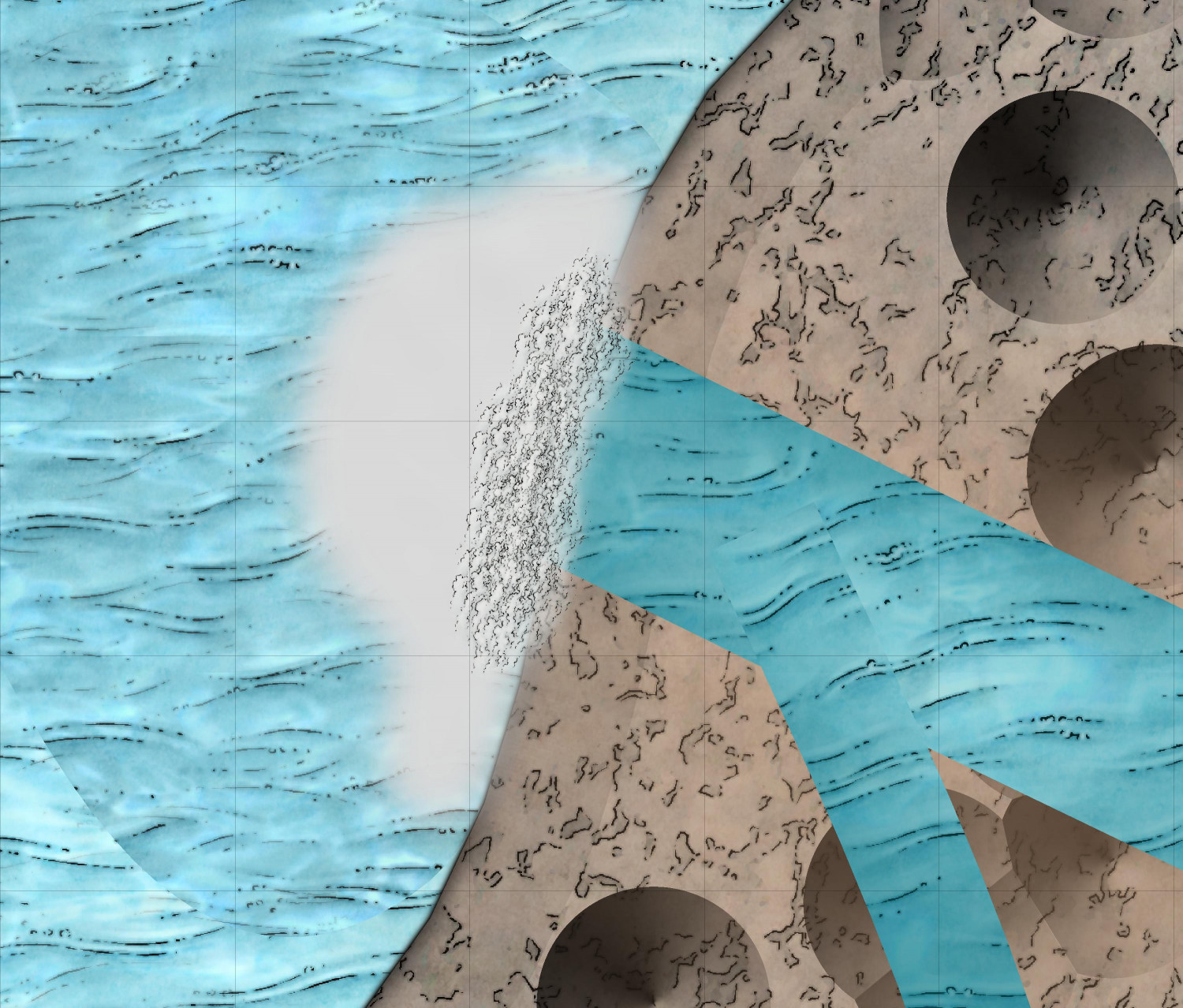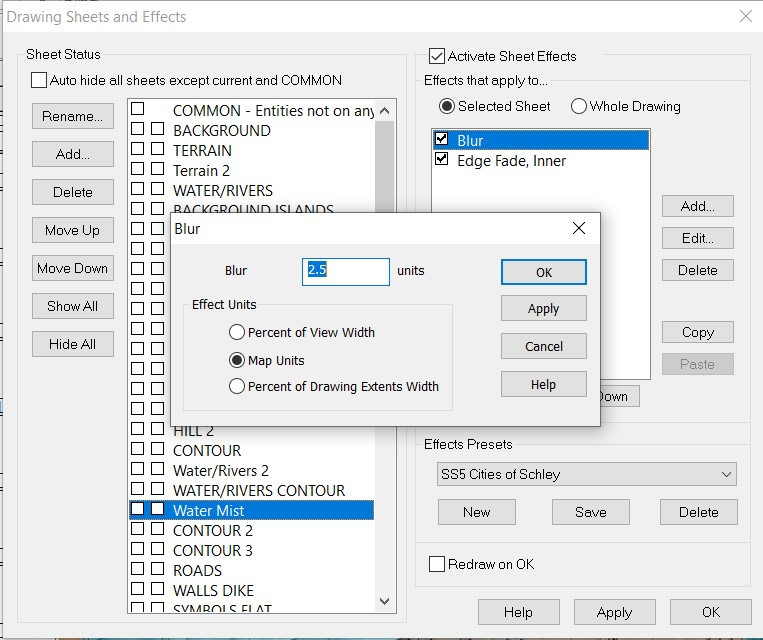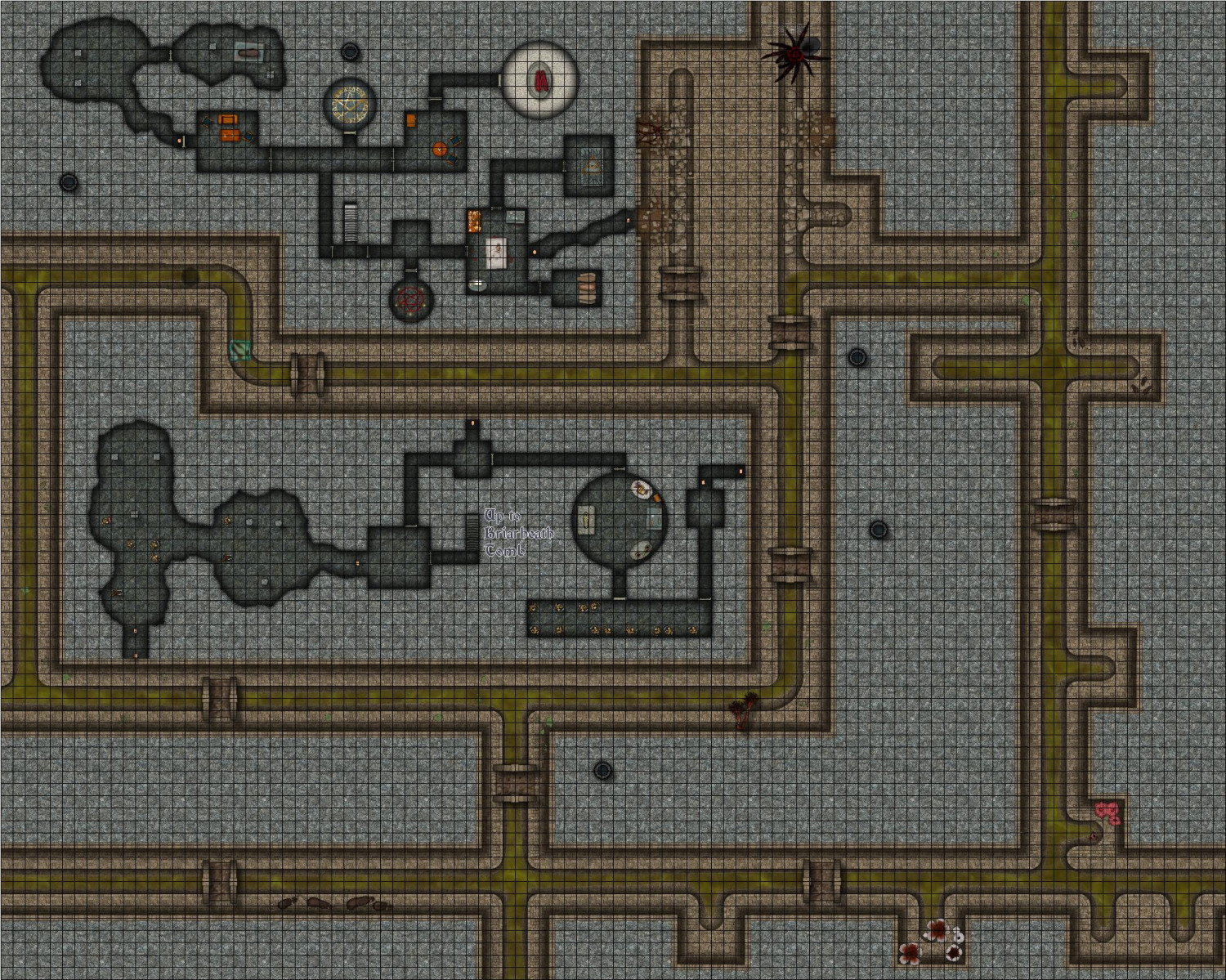Royal Scribe
Royal Scribe
About
- Username
- Royal Scribe
- Joined
- Visits
- 8,820
- Last Active
- Roles
- Member
- Points
- 3,199
- Birthday
- February 5, 1968
- Location
- San Francisco, California
- Real Name
- Kevin
- Rank
- Mapmaker
- Badges
- 16
Reactions
-
[WIP] - Sakherma Ruins
Working on the Sakherma Ruins, a ruined desert temple in the Mike Schley style. For reference, the ruins are at the edge of a mountain range (middle right) in the Eknapata Desert below.
The temple was built with a covered temple partially constructed into the hills, with a courtyard surrounded by walls but open to the sky. The bronze plates that made up the roof were stolen long ago by scavengers, so now what was the interior of the temple is also open to the sky (except for the portion beneath the hill).
Here's the above-ground portion. The other things in the desert are an obelisk, and the head of a once-gargantuan statue, both appearing on the parent map. The river is a small stream that feeds into the Eknapata River on the parent map.
I tried different approaches with the sand dunes. Some are a lighter shade of the sand, some are a partially-transparent darker shade. Let me know what you think.
I fabricated ruined walls by constructing them in three layers and then using the color key cutout to carve out bits of them. They're supposed to have a brown stone core with a lighter gray stone surface. (The Corinthian pillars come from CA49.)
Now for the inside. I tried to show elevation changes using the techniques that Ralf recently demonstrated in the Height Transitions demo. Most of it shows more gradual changes, using Edge Fade effects rather than the Glow effects that Ralf used. The passageway that spirals down to a level below (not yet mapped) used the Glow effect to show sharper transitions. And there are a few areas with higher elevation. One is a small "chamber" off of a narrow passageway -- there are even stairs in that passageway. The other is the wider passageway leading to the underwater lake. It slopes up and then back down to the water.
That blue line? That's supposed to be a wall of glass. I added a bevel and a transparency to it. Not sure it works, and I am very much open to suggestions for how to improve it.
Here's the FCW file if anyone wants to suggest different effects to improve the wall of glass, sand dunes, or anything else.
-
[WIP] Satellite Streets
Playing around with the Satellite Streets annual this afternoon. I was going to do the little town I grew up in, but it had 3,000 people at the time (about 10,000 now) and was a bit too big to be a cozy little town. I ended up doing a town loosely inspired by a much smaller unincorporated town that that about 15 miles away.
Pretty pleased with how the highway onramps/offramps worked. I had an underpass at one point (by creating a "Roads Back" sheet) that worked pretty well, but couldn't really get it to fit with everything else without enlarging the size of map, so I abandoned that.
There are supposed to be hills on either side of the river, with the river in a deep canyon, but drawing the town on the hills wasn't quite to my taste.
I did have a little weirdness with the railroad tracks. They looked funny when I first drew them, and I discovered that I didn't have the Earth background fill that it used, so I was getting red X's. I checked the Bitmaps folder for this annual and it did have the earth fill, so I reimported all of the fills for this annual and got it to work.
Also discovered that while it works to draw a forest or woods over the mountains, you lose some of the beveling detail. I ended up redrawing the forests and woods in little patches.
-
Looking for Symbols
-
Cavern Symbols - Stalactites/Waterfalls
For waterfalls, the Forest Trails waterfalls are pretty versatile and I have used them in a lot of different non-Forest Trails maps, but you could also look at Fog and Mist symbols to see if they work. On one of my maps, I used a snow terrain fill with edge fade and blurring effects to make it look like a waterfall's splash.
This example uses the "Mist" symbol from Mike Schley's SS5 along with a Snow bitmap on a sheet with Blur and Edge Fade, Inner effects.
(Ignore the bevel acne -- only shows up exporting at this zoom so I never noticed it before.)
-
[WIP] Haunted Mansion
Still writing up the proper description but in the meantime, I figured I'd post what I think is the final version of the final map. More sewer encounters, including a giant spider, some rats (both giant and ordinary-sized), a gelatinous cube, and some hungry foliage. (Of course, a proper battlemap would use moveable tokens, but this is for flavor -- the creatures are on a layer that can be hidden.)
Oh, and a whole bunch of skeletons, and a few zombies -- an explanation for those empty crypts!


